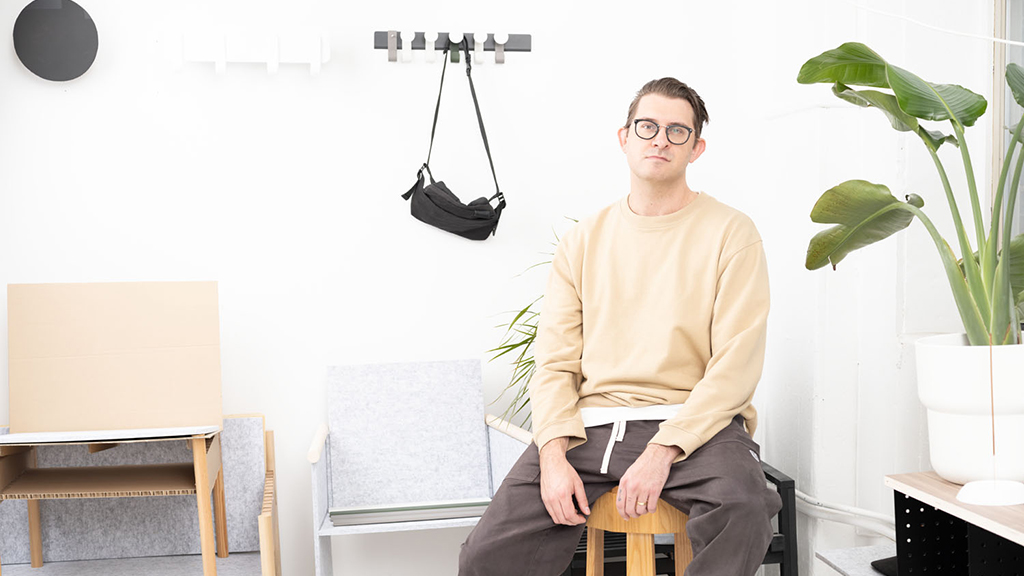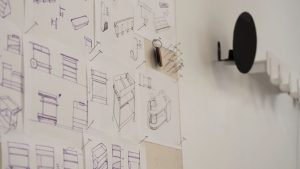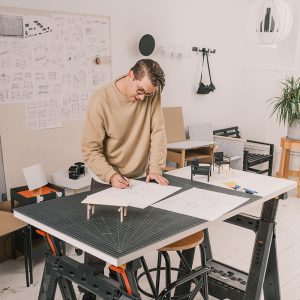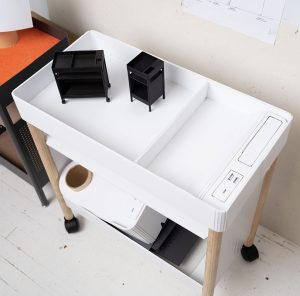Have you ever wondered where designers go to get inspired? We wondered, too- so we sat down with the incredibly talented Jesse Hill of Hill Studio in Baltimore last month. Jesse was the creative force behind our latest product launch for our Most Modest brand, and today, we’re diving deep into his creative process behind the scenes. From ideation to realization, his insights offer a glimpse into the innovative thinking that drove the project’s development. Join us as we uncover the inspiration and process behind our latest collection.
LC: Thanks again for taking the time today, Jesse. Everyone loves a good origin story, so what drew you to industrial design in the first place?
JH: I found out about industrial design when I was perusing through a NYT Sunday art & design magazine that had a large article about Marc Newson, the prolific industrial designer. It showcased his amazing apartment, his cool vintage car, and all the trinkets and artifacts he has collected over the years while they spoke about his career and the types of projects he worked on. It was everything from shoe stores, airplanes, cars, furniture, interiors, electronics, and all the in-between. I was immediately drawn to learning more about what this career path was. It felt so open and freeing, yet still grounded in the familiarity and the needs of people. Up until then, I thought if I liked to draw and create things that exist in this world, then architecture was my option. Otherwise, it was being an artist. Once I learned about Industrial Design, I was set on learning this skill and trade and excelling in it as a career. The things that drew me in deeper were how important it was to consider constraints and the needs of spaces, people, interactions, and all other factors in a project. Very separate from creating something out of nothing, it all starts somewhere.
LC: Can you share a little of what your ideation process is like?
JH: My process as a designer varies slightly, but overall, I try to learn as much as I can about the project, limitations, constraints, users, and all other factors. Once I have a good understanding, I try to push myself to ask even more questions or provoke and pry with my clients to get them to ask harder questions before we seem to align on a general path. I start with research; looking back before going forward always helps; understanding manufacturing and why these processes are necessary for the project, or based on the information, are there other processes I could introduce or suggest to drive a direction? I then start to concept and iterate, most likely loose sketches and 3D, maybe some models and mockups made from anything I have in my studio to simply get a sense of scale and proportion. Once all parties are more in line, I will take it further with renderings, material choices, and the small details of manufacturing and accent factors, such as the noticeable nods that users find clever and enjoy.
LC: Where or what are some unconventional ways or places you draw inspiration from?
JH: I like to reference the past because I think it helps guide the future and prevents us from repeating ourselves sometimes. As far as unconventional, I enjoy hikes and walks in nature as a source of inspiration, and I also like to observe the different textures and colors within a city landscape. Where brick meets old stone and then sidewalk or metal, all these material and textural changes help inform me in many ways.
LC: Do you have a design philosophy?
JH: “Complex simplicity” is what I like to say. I take an empathetic approach to design and try to see products through both macro and micro lenses – striving to understand products in both their larger environments while also being concerned with the details and nuances that make a product approachable and appealing. It is always with the goal to have longevity in a product, in turn being more sustainable. This approach allows me to design within the constraints and contexts while also factoring in the ways the world shifts and is ever-changing.
LC: We’re curious – do you have a favorite product in this new collection?
JH: That is a hard one to answer, but I think it might be the (soon-to-launch) Stella Cart (and the range it offers in sizes and functionality) as well as the Abel wall hook system. I like these together because they specifically communicate with one another, allowing the user to feel freer in how they use their space and products.
LC: What drew you to work with us?
JH: I was drawn to LightCorp and Most Modest because they are a US-based manufacturer that appreciates well-designed products and can produce them at a high level of quality. I saw some gap opportunities in their offering and thought they have a massive amount of potential to be a major player and competitor in the product world, both in the office and at home. I think being able to engineer, prototype, develop, and manufacture all under one roof makes them nimble, quick, able to make changes without a massive delay and get products to the people who use them efficiently. I can’t wait to collaborate on more products; it was a pleasure to work with the team.
LC: Thanks, Jesse—we feel the same! That answer perfectly sets up our last question: What’s next on your drawing board for Most Modest?
JH: A few updates and additions are coming soon, including some integrated power, more modularity, and accessories for Abel, including a whiteboard, mobility, and other add-ons/options. You will just have to wait and see.
LC: We can’t wait to see how the collection evolves. Thanks for chatting with us, Jesse!
See more of Jesse’s work on his website, www.Hilldsgn.com, or @jessehilldesign on Instagram./




